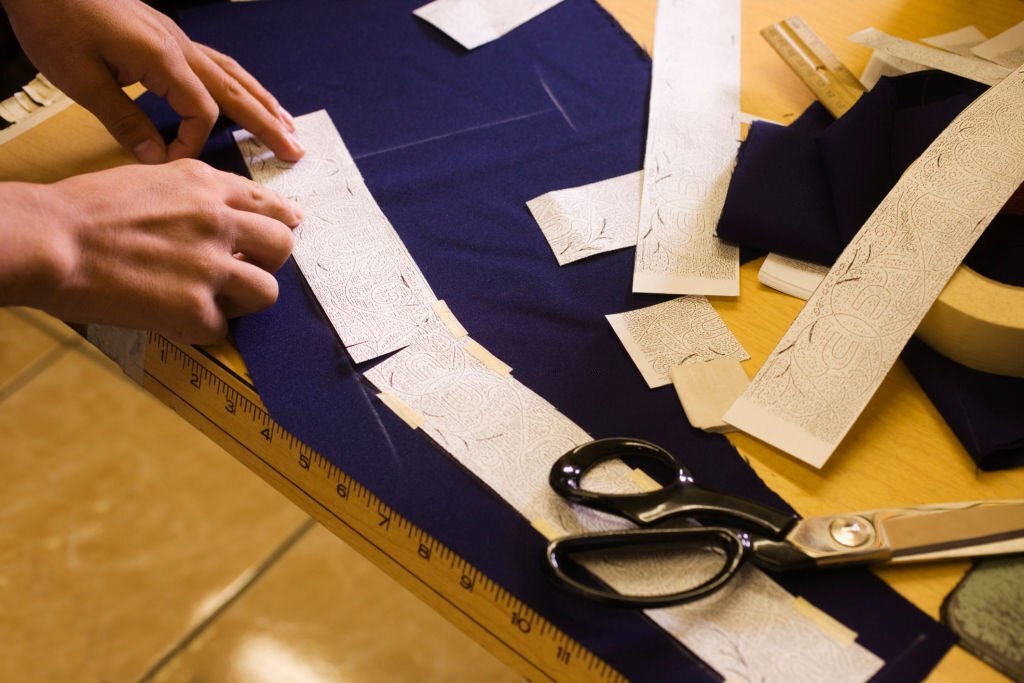There is always one crucial question that needs to be addressed if your organization has a textile project in mind: “How can we bring it to life?”
You will still need cut-and-sew apparel manufacturing or manufacturers to put it all together whether you have a complete plan of your product with all the specifications and components ready to go or just a concept drawn down on a cocktail napkin.
There are various options available when looking for a cut-and-sew manufacturing sector, so it’s critical to understand which one is appropriate for a given job type.


A cut and sew manufacturer is one of your greatest possibilities. What benefits does a cut-and-sew manufacturer offer? What are the benefits and drawbacks? And, what is a private label?
Here is all the information you need to know about private labels, cut and sew, cut and sew manufacturing, and their advantages.
The Basic Definition of Cut and Sew:
As opposed to knitting fabric and then cutting and sewing that knit fabric into clothes, “cut and sew” in the apparel manufacturing sector refers to cutting and sewing clothing from purchased fabric. You can learn more about what is cut and sewing clothing is.
What does cut and sew mean?
Cut and sew meaning: A very old process has been given a new name. It is a design technique where a garment is printed first, then made, as opposed to the other way around.
Typically, businesses and artists buy bulk custom-made t-shirts and have their artwork printed on them. What if the t-shirt design placement guide has some drawbacks, though? You can exercise greater creative control when you cut and sew. New opportunities that are not possible with conventional production are made possible by this type of approach.
Related: A COMPLETE GUIDELINE: TO THE PROCESS OF PRODUCTION OF CLOTHES


Instead of just purchasing mass-produced clothing, personalized clothing can define custom cut n sew services. The person who wants to make something delivers the materials and the pattern to the business, which then fabricates the items by cutting out the pieces and sewing them together.
Advantages of Cut and Sew
By removing the necessity for patterns when creating a new brand or original clothing design, the cut and sew apparel manufacturing method has significantly improved the production methods for the clothing industry. It offers a less constrained and more inventive way to create sportswear manufacturing and high-end, stylish apparel.
Knowing more about the advantages of cut and sew apparel manufacturing can help you determine it’s the best option for your brand.
- Your garment will appear flawless with cut and sew.
- You may design distinctive designs that represent your company thanks to the great degree of customization offered by cut and sew apparel manufacturing.
- Complex designs that cannot be made using conventional methods of garment fabrication can be made using the cut and sew technique.
- Clothing that is cut and sew is frequently more comfortable to wear.
- Clothes that are cut and sewed are durable.
- Cut and sew and private labeling are a successful match for your brand.
Learn How to Cut and Sew a Dress For Beginners.
Here are some steps on how to sew a shirt by hand for beginners.
- Choose Your Fabric and Pattern.
- Prepare Your Template.
- Cut and prepare your fabric.
- Darts marked and sewn.
- Embroider the back zipper.
- The seams on the shoulders.
- Preparation for Neckline Facing
- Neck Facings should be attached.
Related: Reference Guide to Different Seam Types
How Long Does it Take to Sew a Shirt?
Once the components were cut, they could be finished in less than 30 minutes using a serger and the most basic two-piece pattern. But if you want a professional-looking outcome, it’s more realistic to estimate that it will take a few hours from the time you lay out the t-shirt design ideas to cut it. Also, you can check the complete guide on how t-shirts are mass-produced sewing.
Related: Splendid T-Shirt Design Ideas That Will Last a Lifetime

How to Make a Shirt Smaller by Cutting it?
Several methods, such as sewing or using safety pins, can be used to reduce the size of a shirt. Some techniques are more effective on t-shirts, while others are more effective on button-down shirts.
- Your T-shirt should be laid down on the ground with the front facing you. Start by removing the shirt’s length from the bottom. It can be clipped directly over the stitch or slightly higher.
- After cutting the length of the T-shirt, save it. It will be useful later.
- Cut the collar off to create a neckline.
- Your T-sleeved shirts should be cut off at a point immediately above the length.
- The length at the bottom of your T-shirt should be removed and trimmed into a single, continuous length of fabric.
- Take an inch-wide measurement starting at the neckline. Cut a slit that extends to the base of the T-shirt manufacturer and is around half an inch long. Along the bottom of the T-shirt, cut a number of these slits spaced about two inches apart.
- Put a charming bow where the ends of the hem meet by threading the hem from the bottom of your T-shirt through the slits. You might need to trim the hem ribbon tails if you have additional cloth.
Related: The Importance of Clothing Samples For your Production Line
How Do You Find a Cut and Sew Manufacturer?
When looking for a cut-and-sew manufacturer, consider the type of product you want to produce, the fabrics you need, and the quality level needed for that type of product.
Here are a few characteristics to look for, if you’re trying to find a top-notch cut and sew manufacturer:
- Networking: This process requires time. Because they spent a lot of time and effort creating their supply networks, established brands are not going to just pass over all of that to you.
- Several different forums: Choose a forum that provides sufficient information, and Reddit is an ideal spot for asking questions and exchanging resources.
- A reputable brand: Look up internet reviews and ask those who work in your industry for any advice.
- Google: Use Google to identify the cut and sew manufacturer, then make sure the proper partner for your needs by asking the right questions and doing your research.
Find a person who knows cut-and-sew manufacturing. By doing this, you can be sure that your clothing is sewing to the best possible standards and that you are satisfied with the result.
Consider having your clothing created utilizing the cut and sew process if you want high-quality, durable clothing that captures the distinct essence of your business.






